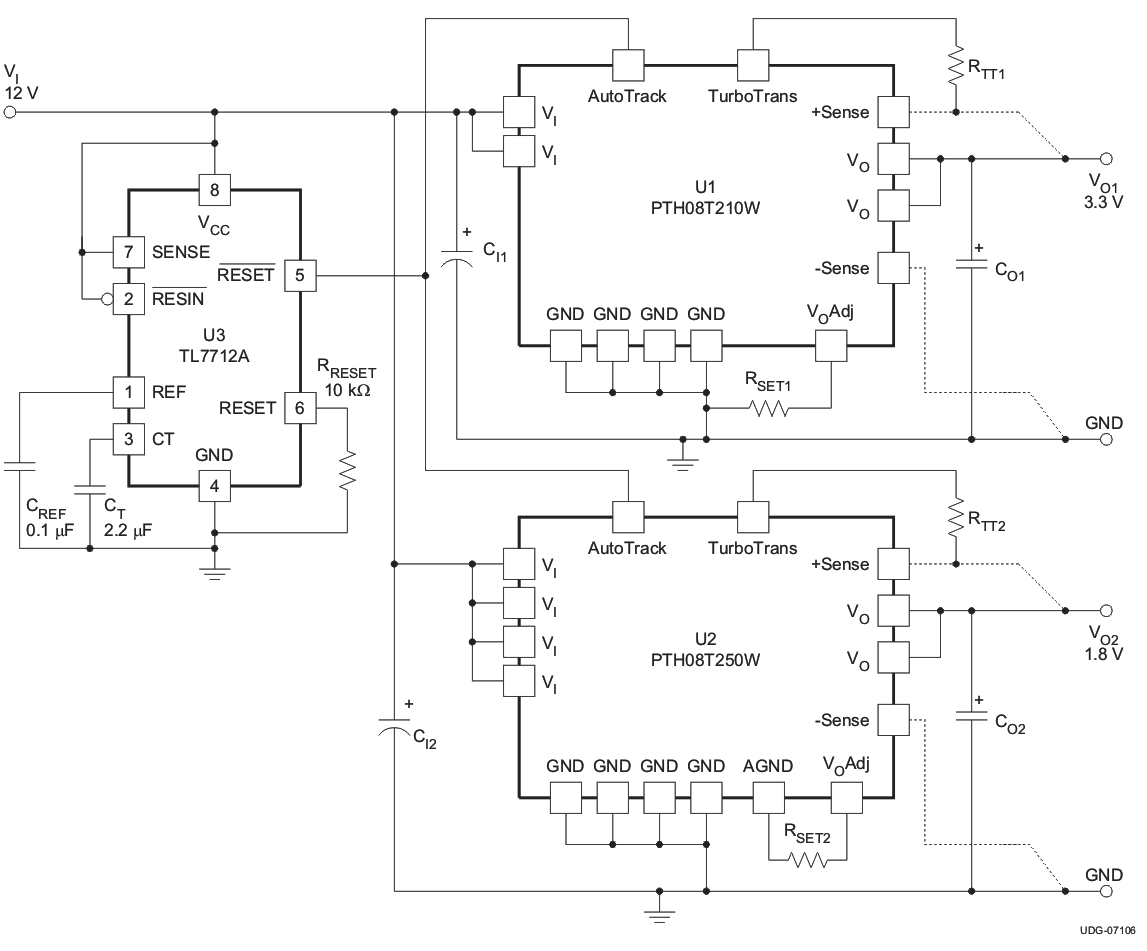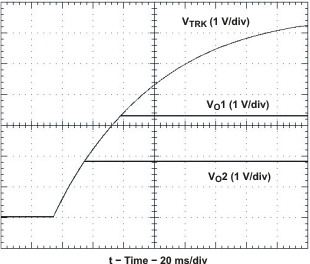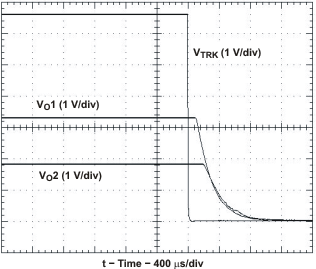SLTS278J November 2010 – March 2020 PTH08T250W
PRODUCTION DATA.
- 1 Features
- 2 Applications
- 3 Description
- 4 Revision History
- 5 Description (continued)
- 6 Pin Configuration and Functions
- 7 Specifications
- 8 Detailed Description
-
9 Application and Implementation
- 9.1
Typical Application
- 9.1.1
Detailed Design Procedure
- 9.1.1.1 Adjusting the Output Voltage
- 9.1.1.2
Capacitor Recommendations for the PTH08T250W Power Module
- 9.1.1.2.1 Capacitor Technologies
- 9.1.1.2.2 Input Capacitor (Required)
- 9.1.1.2.3 Input Capacitor Information
- 9.1.1.2.4 Output Capacitor (Required)
- 9.1.1.2.5 Output Capacitor Information
- 9.1.1.2.6 TurboTrans Output Capacitance
- 9.1.1.2.7 Non-TurboTrans Output Capacitance
- 9.1.1.2.8 Designing for Fast Load Transients
- 9.1.1.2.9 Capacitor Table
- 9.1.1.3 TurboTrans™ Technology
- 9.1.1.4 TurboTrans™ Selection
- 9.1.1.5 Undervoltage Lockout (UVLO)
- 9.1.1.6 On/Off Inhibit
- 9.1.1.7 Current Sharing
- 9.1.1.8 Prebias Startup Capability
- 9.1.1.9 SmartSync Technology
- 9.1.1.10 Auto-Track™ Function
- 9.1.1
Detailed Design Procedure
- 9.1
Typical Application
- 10Device and Documentation Support
- 11Mechanical, Packaging, and Orderable Information
デバイスごとのパッケージ図は、PDF版データシートをご参照ください。
メカニカル・データ(パッケージ|ピン)
- BCU|22
- ECT|22
- ECU|22
サーマルパッド・メカニカル・データ
9.1.1.10.3 Notes on Use of Auto-Track™
- The Track pin voltage must be allowed to rise above the module set-point voltage before the module regulates at its adjusted set-point voltage.
- The Auto-Track function tracks almost any voltage ramp during power up, and is compatible with ramp speeds of up to 1 V/ms.
- The absolute maximum voltage that may be applied to the Track pin is the input voltage VI.
- The module cannot follow a voltage at its track control input until it has completed its soft-start initialization. This takes about 20 ms from the time that a valid voltage has been applied to its input. During this period, it is recommended that the Track pin be held at ground potential.
- The Auto-Track function is disabled by connecting the Track pin to the input voltage (VI). When Auto-Track is disabled, the output voltage rises according to its softstart rate after input power has been applied.
- The Auto-Track pin should never be used to regulate the module's output voltage for long-term, steady-state operation.
 Figure 33. Sequenced Power Up and Power Down Using Auto-Track
Figure 33. Sequenced Power Up and Power Down Using Auto-Track  Figure 34. Simultaneous Power Up
Figure 34. Simultaneous Power Up
With Auto-Track Control
 Figure 35. Simultaneous Power Down
Figure 35. Simultaneous Power Down
With Auto-Track Control